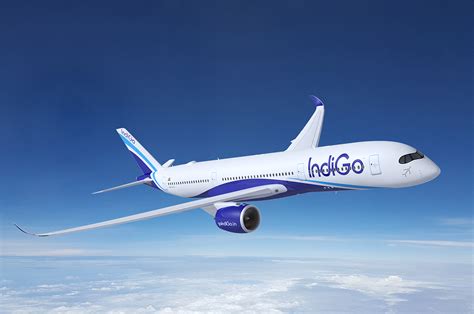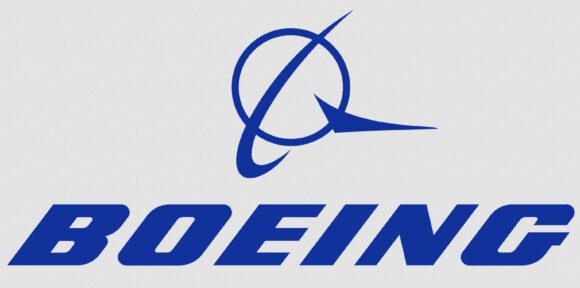The 180-200 seats segment is getting the attention of Boeing and Airbus. It is growing fast as airlines up-gauge their narrow-body fleets and 757s retire. The chart below illustrates the growth in this segment, with the fleet of about 600 aircraft in 2000 doubling by 2014. And who is winning this segment’s competition? Airbus and its A321. Boeing used to own this segment with its 757.
 Airbus has seen its share of the segment rise from 17% in 2000 to 53% in 2014. Given that the A321neo is comfortably outselling the 9MAX, this is likely to continue in the near and medium term.
Airbus has seen its share of the segment rise from 17% in 2000 to 53% in 2014. Given that the A321neo is comfortably outselling the 9MAX, this is likely to continue in the near and medium term.
However, one should not assume that this success is going unnoticed in Seattle. Even as Airbus offers an A321LR – seemingly surrounding this segment with options – Boeing is almost certainly going to respond.
The question is when, and how far Boeing will go. The 737 MAX9 is not competitive against A321neo or A321LR, either in range or runway performance. The 737 MAX8, even in a MAX200 configuration, doesn’t measure up in size or range. As there is little more Boeing can do with the 737MAX than what it has already done, it is apparent that Boeing will need a new aircraft – effectively a 757 replacement.
With average seating capacity moving upward, Boeing’s next generation narrow-bodies will likely be optimized around a 180-190 seat profile, offering longer-range for those who need to replace the 757 for transatlantic services. The industry rumor mill is rife with suggestions that a new design will be the ultimate solution.
But as Boeing is yet to deliver a MAX, which needs an 8-10 year production run to provide a strong ROI, we don’t foresee Boeing introducing a new single aisle design for quite some time. From a timing perspective, and a six-year development cycle for new models (up from the traditional four years), we expect Boeing to announce a new program in 2018 for initial entry into service in 2025. The problem is how to introduce a new narrow-body family without killing the MAX, for which production rates are currently being increased.
Timing is everything, and Boeing missed a window of opportunity with the 787 delay. Had the 787 been on time, Boeing would be working on a new model to leapfrog the A320 family today, rather than playing catch up with a re-engining program that seemed to be conceived in a hurry to have something to counter Airbus’ narrow-body win at American.
Of course, by the time a new model could enter service, most 757s will be retired, as the youngest will be 21 years old in 2025 and the oldest models 43 years old. With the majority of the 757 fleet retired, Boeing will need to leverage its technology to re-build the market share it lost, and continues to lose, to the Airbus A321.
Airbus will, of course, also need a new clean sheet design to replace the A320 family, and while their target was the 2030 time frame, action by Boeing could force them to move their timetable forward. For Airbus, the two year lead for the neo over MAX provides an opportunity to capitalize on their investment earlier, and leaves Airbus in a strategic position to force Boeing’s hand, if it chooses to accelerate its own new aircraft development timetable. But each OEM seems content, for now, to milk their existing re-engined products as long as they can.
The Bottom Line:
Now that Airbus has gained the lead in this segment, the question becomes how aggressively will they defend it, and will Boeing launch a new design and take back share without a fight. As the industry has evolved into a duopoly, we’ve seen “me too” behavior with the MAX reaction to the neo, and the A350 reaction to the 787. The 737 began life in 1967, and the A320 in 1988. Both will be in need of a technology upgrade a decade to 15 years from now, and the key may be the evolution of engine technology, which more than any other factor, drives airline economics.
Pratt & Whitney is salivating over the potential for a 40,000-45,000 lb thrust GTF, which because of scalability in design, would not be a difficult task, given that they already have six different variants in design. Rolls-Royce will be looking for an application for its Advance engine, and CFM/GE will be pushing the frontiers with the LEAP.
This segment is likely to be the launching pad, and optimal design point, for the next narrow-body aircraft families. The question is who will be first to market.
Views: 1




Boeing has already had its share of issues with the EIS of the 787. To add insult to the injury, Airbus was the biggest benefactor of the lessons learnt in the process (Remember the Battery incidents?). Given this , I would believe that Boeing’s executives will have a very low appetite of risk. Given that the Single Aisle line is the Cash cow for both Airbus & Boeing it is unlikely that the New Single Aisle project is the going to be very ‘New* ‘, given the new and therefore largely new unproven technologies potentially involved .
I suspect that the best way ahead for Boeing in the near term (next 5 years) is to create what is essentially a Re-engined 757 (in terms of dimensions/sizing) with most systems updated to the state of art. They may additionally choose to carbonize the frame and perhaps have increased commonality with the 787 family. In essence it would be a slimmed down & Re-engined 787 carrying between 180-240 pax in a 2 class layout with base range of about 2500 NM (US-transcon) going upto 4000NM (TATL) for the LR version with optional additional fuel tanks in the cargo bay.
This ‘single aisle-787 family’ would sit between the 737 & the 757/767 families in terms of capacity in the sweet spot that the current market trends point to. Further more the commonality for 2 families are twin aisle 787 family + Single Aisle 787 family will be able to harvest significant benefits to Boeing and its suppliers in terms of a streamlined manufacturing process as well as to the Airlines in terms of reduced training costs and reliability due to more mature system while still gaining in terms of fuel efficiency. Boeing would create additional orders for customers gauging up from SA-787 to the twin aisle 787 as well as from current twin-787 operators who would prefer buying the single aisle-787.
Additionally , depending on the C series performance, Boeing might further choose to buy into Bombardier (or Embraer,but less likely). This would give it access in the regional jet market and use it to fight off newer rival such as COMAC, Superjet , Mitsubishi etc before they can get too big. Moreover they might push for further systems commonality between the C-series,the single – aisle 787 and the current twin aisle 787 creating a set of families that span from 100-300+ (C-.series CS100 – B787-10) seat range. It will also give it a toe hold in the turbo-prop market with the Dash-8.Think about all the network airlines that would love that level of operational flexibility with the 3 sub family range.
What about the 737 family , the current single aisle family? I hear you ask : Well Boeing should continue to manufacture and market it, though with minimum additional investment in terms of further development. Boeing should concentrate on selling the 737 as a highly standardized (low customizable) aircraft focused on the Low-Cost Airlines. As a highly standardized product (Most LCCs dont customise their aircraft anyway) , Boeing could concentrate on volumes and with aggressive pricing to go after LCC market. A low cost product for a low cost buyer!
With this dual strategy of the new single aisle 787 for network carriers and the 737s for the low cost carriers , Airbus is likely to feel the pinch in its margins , but probably not enough to risk development of a NSA in itself before 2030. It might respond by aggressive marketing /pricing to hold the market share. In any case they already have sufficient orders to keep them going for the next 7-8 year now. At best it might buy in to Embraer (assuming that Boeing buys BBD) and drive its A320 family architecture to the E2-Jet series as well.
This brings us back to the question in the above article : ‘ who will be first to market for the new NSA.’ For the real new NSA* , it will most likely be COMAC or Superjet. In about 5 years they would probably have a reasonably mature product and well trained engineering. Finding that they are not able to grow beyond their home markets and with their respective governments seeking to ambitiously push exports & influence, they would likely be most willing to take the risk of creating the ‘new’ single aisle. This was what Airbus did with its A320 family and then novel fly by wire technology. If the new technologies in the new single aisle succeed, Boeing and Airbus would move quickly to incorporate these technologies into their offerings as well (as applicable) once they are mature enough or acceptable to the public and certification authorities.
All this would take at least a decade to play out. It is no wonder then that Airbus expects its new single aisle to come online only in the 2030+ time frame.
* By new NSA i mean with novel technologies such as CROR engines or flying wing designs or something lot more novel than the common tube -wing design,
Satyajitters,
That is quite a summary of the market. Nice job. CROR (counter-rotating open-rotor) engine has issues with noise, a major factor in engine design. The GTF (geared turbo fan) engine would be a perfect fit for the new single aisle. It will be a mature design by 2030.
I think Boeing indicated the New Light Twin will be larger then the 757. More a 757-767 replacement. Makes sense to avoid the A321(-22?) family. Can Airbus put a leaner, bigger wing on a A322(23?), of course they can.
The 737 is far more over its expiration date then the cold backlog number suggest. Many hundreds are ” unidentified” for some reason, everybody worries about the LEAP-B and too many large 737NG customers are missing in the MAX backlog. It seem Boeing is pushing production to sell based on availability, rather then efficiency Keeping up appearances, but sales margins will be accordingly. If the lease rates are high, lessors expect a short economical life time/ low rest value.
Boeing wants to wait with the NSA until 2030, But the market won’t allow them. Like what happened with the MAX and 787. Boeing specialist saw competing products (320NEO/A330) hit the bulls-eye and had to react quickly. A better composites version of the A321, with better wings, lighter, stretch and range potential. I think Boeing hinted this also.
Flew this one a few weeks ago. Cargo potential, big business class cabin but still also a large economy class with IFE. Flown out of hot places. I wonder if the 737-900ER was even considered..
http://www.airportspotting.com/wp-content/uploads/2015/04/A321-B-HTF.jpg
BTW remember the many diversions UA had this winter to Berlin, Barcelona, Hamburg, Madrid? People tried to play down, generalize, deviate trhe discussions. But not UA, they announced replacing the TATL 757s with 767, to avoid the embarrassing diversions. From the horses mouth. So the A321NEO better fly a bit further then 4000NM too, if they want to score UA, DL, AA for those long thin flights.